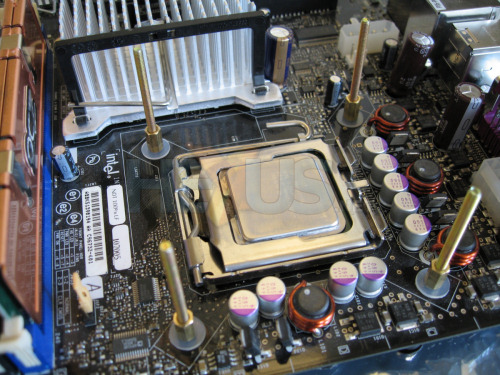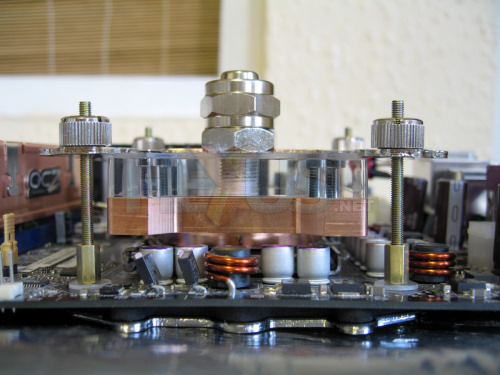Water-cooling kit – continued again
The water-block with this kit is compatible with LGA 775, Prescott, AMD K8, K7 and the latest AM2 format according to a manual insert.Opening the box for the fitment kit makes your heart skip a beat; there are plates and screws everywhere!
There is one molex adapter included in the box; this is used to connect up the front radiator.
The good news is that for our LGA 775 processor we only needed the plates in the top right and the long screws in the bottom left.
With the motherboard out of the case the first thing you fit is the sticky-padded plate to the back of the board, over the usual cooler holes.
Once the plate is in place you thread the four screws through the holes then flip the board component-side up, placing a washer on each of the screws, followed up with a brass jacket screw.
With all four screws finished we need to move onto the water-block. After applying thermal paste to the CPU the block is placed on top.
The block is then fitted with an ‘H’-plate over the four screws and between the two tubing connectors on the block itself.
The ’H’-plate is secured in place using four thumb screws. This requires a bit of care, so don’t rush it, but when you are finished it should look like our test board above.
With that complete it was time to put it all in the case, tube it all up and fill the coolant.
Before we do though, there is a bit of an issue with the water-cooling kit – we fitted it to our usual test board, and, as such, we needed to take it apart when finished.
The sticky pads enclosed with the kit were made by 3M. I know they have a reputation for very good products, but this was just obscene, folks!
It took over an hour to get the metal plates off our test board, and the sticky pads were ruined in the process. It made this hack bleed, twice, and caused a proper hissy-fit or three.





